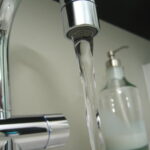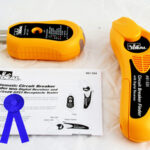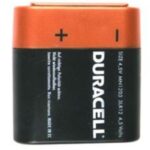Annual Maintenance: Flushing the sediment out of your hot water heater is something that should be on your annual maintenance list. Salts and minerals in water will settle in the bottom of the hot water tank forming a thick layer of sludge, dramatically affecting its efficiency. My research has brought me to two methods to remove this energy thief.
Method One:The first one is what is called the “power flush” which seems to be by far the easiest way to do it. First, if you have an electric hot water heater, shut off the breaker or power source. If you have a propane water heater, turn the dial to pilot mode. For safety purposes, you should allow the tank to cool for several hours. You will need a garden hose that can reach either the sump pump, utility sink, or preferably outside onto a surface that won’t be damaged by hot water. If draining into the utility sink, you may want to put some kind of strainer in it to prevent sentiment chunks from clogging your drain. I would only use the utility sink as a last resort. There is a drain valve near the bottom of the hot water heater, where you attach the garden hose, called the discharge valve. (Make sure you have the hose on tightly or you may be getting a shower). This method calls for leaving the water source ON to keep up the pressure so when the discharge valve is opened, the force of the water pressure will blast the sludge out. After the hose is attached securely and directed to the drain location, open the valve carefully and let it flush until the water runs clear. This could take only a few minutes or possibly up to 20 minutes depending on how much sentiment has built up. Be very careful not to get scalded by the hot water if it has not had sufficient time to cool.
Method Two: The second method is the one most commonly used though I really don’t see the benefit of it over the first method. As in the first method, shut off power source on electric models, for propane, turn the dial to pilot mode. Allow to cool for several hours especially if it is electric. Emptying the hot water tank while electric elements are still hot can cause serious damage. The difference with this method is you turn OFF the water supply to the tank. Attach garden hose to the drain valve. Before opening the drain valve, open a hot water faucet in one of your sinks or tubs. This will prevent a vacuum from forming in the lines. Now you are ready to open the drain valve to release the water out of the tank. Once the tank is empty, turn on the water supply to flush out any remaining sludge. Once the water runs clear, shut the drain valve and remove the hose. Close the opened hot water faucet on the sink or tub. Allow the water tank to fill completely before turning the power back on or turning up the dial to the desired temperature if it operates on propane. There will probably be air in the lines so open a faucet to let the air escape. Once the water temperature has been brought back up, test the pressure-relief valve according to the manufacturer’s instructions. This safety device is designed to prevent excess pressure build-up or overheating inside the tank.
Correct Water Temperature: Since we are on the subject of hot water heaters, check to see what temperature you have the hot water tank set on. When taking a shower, if you have to turn the cold water handle several times to bring the water temperature down enough to make tolerable, your settings are too high. Hot water heaters are one of the biggest energy hogs so it’s not only wasteful but it’s dangerous to have the water that scalding hot. Adjust the thermostat down to the point where you need one turn of cold water added to the hot to make it satisfactory when showering. Your hands can endure a much higher temperature so don’t gauge it by doing dishes or something of that nature.
Ask for help: If you don’t feel up to this task, ask a friend or family to help. It will be well worth the effort. As with any device always read the warnings and instructions on the label carefully!





